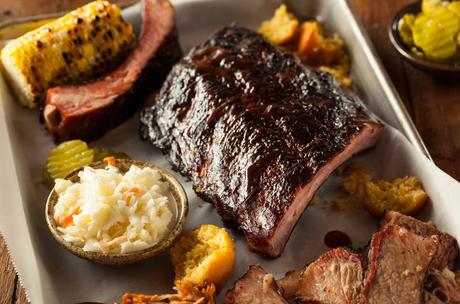Curing helps Preserve Meat or Fish and make them Last for Days or even Weeks
Through the use of a combination of salt, sugar and either nitrate or nitrite, fish and meat can be successfully preserved and even add flavoring to them. Other curing techniques also involve smoking or cooking them on a barbecue grill (smoked meat could last for several days without getting spoiled and they even taste better than raw meat). No one is really sure what the etymology of the term is; however, many believe that curing derived from the Latin word “cura, -ae”, which has the same meaning.
Terminology
Curing is more of a relative term like a generalized term for something (i.e. fish to a tuna or salmon, nut for coconut or hazelnut etc.). Curing has individual names depending on what type of food you want to preserve. Using salt in curing something is called “salt-curing” and the same is true when using sugar – the term is “sugar-curing.” The application of pellets of salt, called corns, is often called “corning.” “Wet-curing” or “pickling” or “brining” is the appropriate term for curing in a water solution or brine. The curing of fish is sometimes called “kippering.”

Meat Preservation
Preserving meat products which includes meat from livestock, game, and poultry is why curing was invented. The aim is to preserve the color, texture, taste and other properties of raw, cooked, or cooked meats while making sure that they will not get spoiled and is safe to consume. People as far back as 7,000 years ago have been practicing curing in order to preserve meat, but new technologies and techniques are now starting to complement the preservation method and some may even replace it.
You may also want to read Amuse Bouche: Tantalizing the Mouth and Invigorate the Palate
In the past the primary purpose of curing was to preserve meat in order to prevent disease from spreading in populated areas and increase food security. Today, however, it is merely practiced to preserve cultural values and also sometimes preserving meat in a certain way makes it taste better than just cooking it raw. For under developed countries; however, they still practice curing for exactly the purpose it was invented – to preserve meat and make it accessible to most people.

How Chemical Reactions in Curing Help Preserve Food
Salt inhibits the growth of spoilage-causing microorganisms by drawing water out of microbial cells through osmosis. Less bacteria population means less or no disease infections will occur when the meat is digested. The only bacteria that’s acceptable to grow in preserved foods is the Lactobacillus genus as they are good bacteria and some are even found in our intestines. Another component in mixing a curing potion is sugar. Sugar helps limit the population growth of bacteria, because even if it is good bacteria you wouldn’t want too much of them in your food.
Also sugar adds strong, pleasantly sharp taste or appetizing flavor or smell to the preserved foods, so you’ll enjoy eating them all the more. Smoking food (especially meat) improves flavor, inhibit oxidation and prevents the ability of bacteria to grow. Nitrates and nitrites also help kill bacteria as well as add a tangy flavor to the meat, plus it also gives a pinkish/reddish color to the meat. The nitrate, which could either be potassium or sodium nitrate (NO3) breaks down further once it reacts with the meat and binds with the iron atom which also prevents oxidation.

Restaurants Curing their Own Food
Purchasing cured foods in large volumes from suppliers has some problems that may want the restaurant to shy away from the potential deal, even if it guarantees a group rate discount. This actually inspired some restaurants in Austin, Texas, for example, to cure their own food and empower the local meat market by buying from them regularly. The benefits of restaurants curing their own food, especially meat, is that it leaves no room for any delivery delays compared to suppliers that ship their meat in trucks from several hundred miles away. This means that the cured meat is only at least a day old and is very edible and safe (even though cured foods are designed to last for days on end). It also saves the restaurant on cost overruns and ensure business operation with minimal losses in profit.
